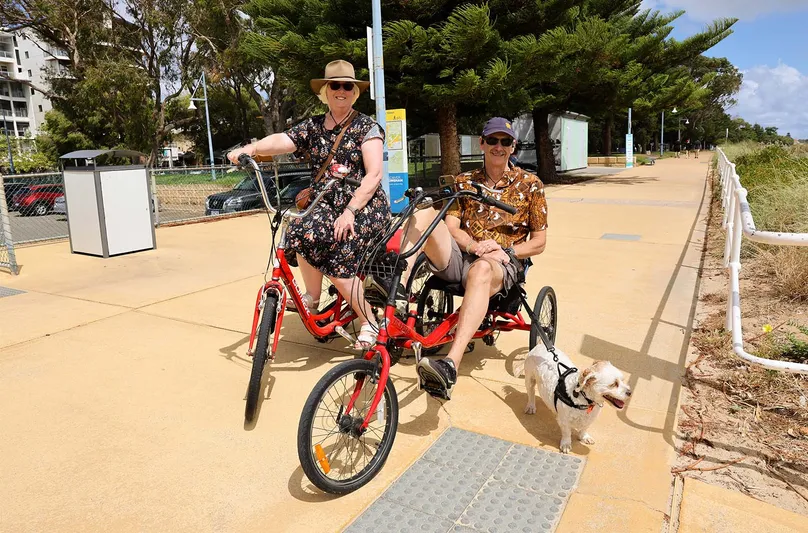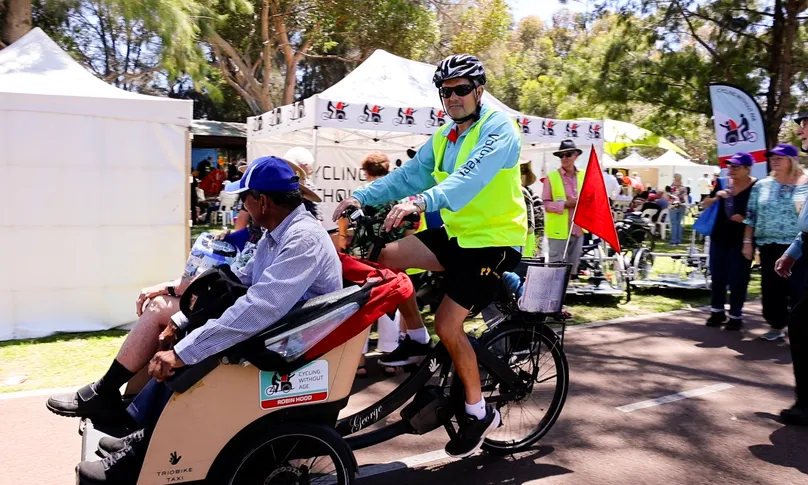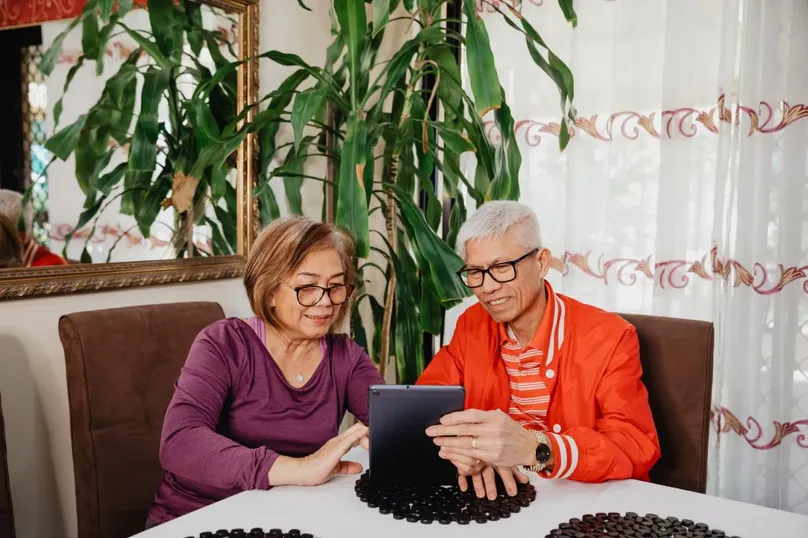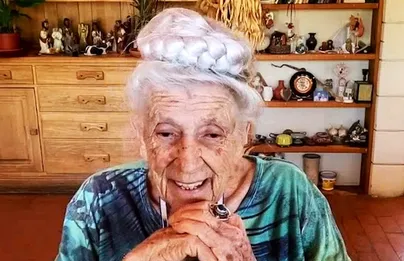Here's what makes cycling so good for you, and how you can make this activity more accessible.
Looking for an exercise to help you strengthen your bones, muscles, heart, and brain? Cycling has benefits for older people as a low-impact, low-cost, but high-reward exercise.
Cycling with Ian and Gail

Watch this video to hear from Ian and Gail about the benefits of cycling.
5 reasons to get on a bike:
1. For your heart
Cycling is a low-impact cardiovascular exercise. That means it’s gentle on your joints while giving your heart a good workout.
Because it’s so good at getting your blood pumping, cycling lowers your risk of cardiovascular disease. This includes heart attacks, strokes, and high blood pressure.
Cardio workouts also help you manage your weight. And this reduces your risk of various health conditions.
2. For your brain
Your heart health is also linked to your brain health. So, keeping a healthy heart has the following added benefits:
- Lowering your risk of dementia and reducing its symptoms
- Helping with brain functions like emotional regulation and motor skills
- Helping with thinking skills like memory and learning
3. For your bones and joints
Low-impact exercise like cycling helps with osteoporosis by building up the muscle and bone strength in your lower body. It's especially good if you cycle outside under the sun. Sunlight is a major source of vitamin D, which helps you absorb calcium and maintain bone density.
The gentle movement of pedalling can also help with osteoarthritis. Regular movement keeps your joints mobile and reduces pain. Joint mobility also contributes to improving your balance.
4. Reduce your risk of falls
Cycling improves mobility, balance, and the strength in your legs. These things altogether help to reduce your risk of falls and injury.
- A 2022 study found daily outdoor cycling improved reactive balance behaviour in older adults. This means older adults who cycled were better able to recover from stumbles than non-cyclists.
And this will help maintain your independence as you age, improving your quality of life.
- A 2018 study found daily cycling was associated with reduced fear of falling. Less fear means more confidence to move around and keep doing what you love.
5. Mental health benefits
Don't forget that exercise also makes you happy. It causes your brain to release endorphins and hormones that reduce pain and boost mood.
In fact, daily exercise helps you relieve stress and sleep better at night. And low-impact physical activities such as cycling are known to increase happiness without increasing pain.
Sunlight and greenery can also improve your mood. So, a cycle through the park could be a pleasant way to exercise while engaging with your environment. It's a good activity for your mental health.
Ways to make cycling possible
If you're not confident on a bicycle, there are other options to consider:
- A tricycle can offer more stability if you’re concerned about balance.
- If you don’t feel confident on a tricycle, you could also consider using stationary bikes.
- Electric bikes or electric tricycles can make outdoor cycling easier. This can be helpful if you get tired cycling up hills, for example.
- If you have visual loss, you may be able to cycle on a tandem bike with a guide.
- Groups like Cycling Without Age may be able to help you enjoy the wind in your hair if you can't cycle yourself.
Cycling Without Age

Watch this video to hear from Adrian about this organisation that give rides to people who can't cycle themselves.
Cycling safety tips
- Helmets are always essential for safety.
- High visibility vests, reflectors, and bike lights may also be critical in conditions of low visibility, such as evenings or foggy days.
- Remember to bring a water bottle with you to stay hydrated, especially on hot days. Most bikes come equipped with a water bottle holder, but if you’re missing this you can carry it in a backpack or water bottle sling.
- On sunny days consider using wraparound sunglasses to protect your eyes and see where you’re going. It's important to stay sun safe!
- Always use the cycling path and avoid riding in traffic.
Centenarian cyclists
A centenarian is someone who has lived past the age of 100 years old. Of course, not everyone is so lucky!
If you’re still cycling past the age of 100, you’d be what’s known as a ‘super ager’. That’s someone who stays incredibly healthy into advanced age.
While some of this comes down to genetics, 75% of the way you age is a matter of daily healthy choices.
Regular cycling is something you can do to promote your healthy ageing. Here are a couple of cycling centenarians you can look to for inspiration:
- 103-year-old Dr Gladys McGarey used her tricycle frequently to keep active. She also walked 3800 steps a day. She was dedicated to promoting positivity and a holistic approach to health through her books and interviews. You can watch or read about our interview with Dr Gladys here.
- Robert Marchand was a French cyclist who lived to 109 years old and continued riding his bike outside until 108. He attributed his success to a healthy diet and lifestyle, proving that there is no upper age limit to training the human body. At 105, he held the world records for the fastest 100km and the greatest distance cycled in one hour by someone older than 100.
If you’re looking for more examples of healthy ageing, check out our page dedicated to inspirational older people.
Important safety notice: exercise with caution
Before you begin any new exercises, remember to listen to your body. Stop and seek advice from a medical professional if you feel new or increasing pain, or if you feel dizzy, clammy, or short of breath. Some exercises may not be for you. Consult a medical professional if you are unsure.
Join your community
If you would like to find local exercise classes, social activities, and helpful tips, try the quick quiz or get in contact with our helpful team on 1800 951 971.
We may be able to help you find a cycling club to join. It could be a fun way to meet likeminded people while improving your health.
References
Batcir, S., & Melzer, I. (2022). Daily outdoor cycling by older adults preserves reactive balance behavior: A case-control study. Journal of Aging and Physical Activity, 31, 7–17. https://pubmed.ncbi.nlm.nih.gov/35562104/
Batcir, S., & Melzer, I. (2018). Daily bicycling in older adults may be effective to reduce fall risks: A case-control study. Journal of Aging and Physical Activity, 26(4), 570–576. https://pubmed.ncbi.nlm.nih.gov/29345533/
Leyland, L. A., Spencer, B., Beale, N., Jones, T., & van Reekum, C. M. (2019). The effect of cycling on cognitive function and well-being in older adults. PLoS one, 14(2), e0211779. https://pmc.ncbi.nlm.nih.gov/articles/PMC6388745/
Ebbers, C. (2017, February). What we can learn from this 105-year-old cyclist. https://www.outsideonline.com/outdoor-adventure/biking/105-year-old-frenchman-fitter-you/
How to use this information
LiveUp provides free information to help you make informed decisions about your health. This information is for general and educational purposes only, is not intended to provide a comprehensive guide, and does not replace medical advice. Everyone is different, so some of these tips may work better for you than others. You should use your own judgment and seek medical advice when applying this information to yourself, to determine if it is suitable in your circumstances. Your use of, or reliance on, this information is solely at your own risk. Independent Living Assessment Incorporated is not responsible or liable for any injury, loss, or damage caused as a result of your use of, or reliance on, this information.
Download and print this article:
You can print out the PDF and stick it to your fridge or file away the tips to revisit at a later time.

Read more Fitness articles
Did you enjoy this article? You may also like reading similar healthy ageing articles.
See all Fitness articles

